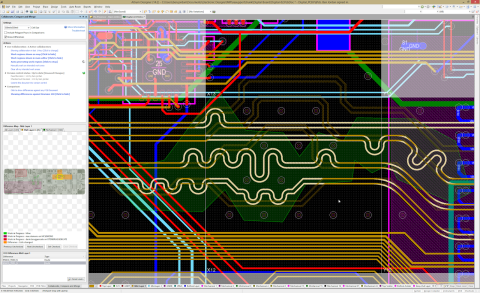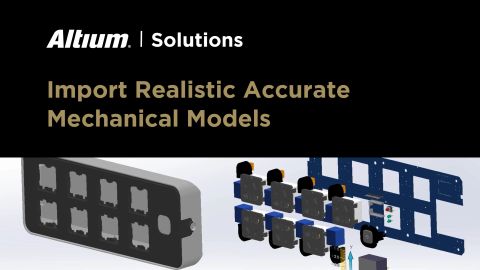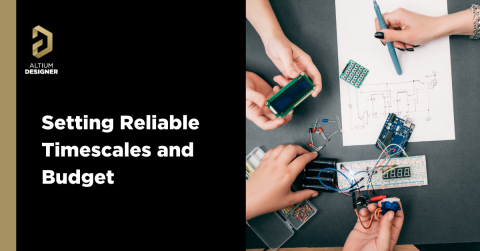Collaborative Product Development: How Electrical Engineers Can Drive Better Outcomes

The modern electronics landscape rewards teams that coordinate early and often. With tighter schedules, more complex systems and volatile supply chains, the cost of misalignment is too high to ignore. Success depends on context sharing, collaborative processes and fewer late-stage surprises.
That level of collaboration can’t be achieved with static design reviews and a jumble of email threads. It must happen inside the tools where engineers and other teams work every day. When collaboration is embedded into the workflow, teams move faster, avoid costly rework, reduce friction between disciplines, and accelerate delivery. For electrical engineers, this unlocks opportunities for a broader role with greater impact.
What Cross-Functional Teams Need to Stay Aligned
Today’s design process spans multiple teams, each with a unique view of the product. Electrical and mechanical engineers, firmware developers, sourcing specialists and compliance reviewers all rely on different details, yet their decisions are deeply connected.
Keeping those teams aligned requires a single source of truth. That includes schematic intent, layout geometry, part availability, documentation and revision history. If any piece falls out of sync, so does the team. Cloud-based tools unify those perspectives by providing contributors a shared environment to review the design in progress, leave targeted feedback and track decisions.
The Evolving Role of the Electrical Engineer
Electrical engineers are at the center of modern product development. Each part selected, footprint adjusted or connector placed sets off ripple effects across layout, sourcing, mechanical fit and manufacturing. What starts in the schematic today can shape how fast a product ships, how well it performs and how much it costs.
With so many downstream impacts, visibility is essential. When the design environment shows how one decision affects the next, engineers gain the context to lead. They can flag potential blockers, suggest alternates, and help avoid costly backtracking. This level of awareness elevates the engineer’s role. Part selection supports sourcing strategy, connector placement supports mechanical alignment, and layout review becomes a shared checkpoint for the entire team.
Enabling Collaboration Through Shared Context
Effective collaboration depends on shared context. Engineers and stakeholders need real-time access to the same design details and constraints, so everyone can stay in sync and promptly respond to decisions and changes soon after they are made. This includes visibility into schematic logic, board geometry, net relationships, sourcing data, revision tracking, comments, and structured feedback.
Altium solutions deliver this experience. Team members can zoom into a board feature, annotate a net or review a BOM without interrupting the design flow. Mechanical reviewers can check placement and fit. Procurement can verify pricing and availability through Octopart. Contributors across the product lifecycle work in a shared space with a common, current, trustworthy source of truth.
When context is built into the process, a team’s collaboration improves and decisions are made faster. Engineers stay in sync without having to chase down files or re-explain their intent. The result is a design cycle that moves forward with speed and precision, driven by a team that solves problems before they become blockers.
Making Component Decisions Visible Across the Team
Component selection is one of the most interconnected decisions in product development. Each part chosen affects electrical behavior, of course, but also sourcing, compliance and manufacturability. In traditional workflows, these impacts often surface too late, after a prototype build, during a purchasing scramble or just before a critical handoff.
Shared visibility helps prevent those last-minute surprises by giving everyone a window into the BOM as it evolves. With Altium’s tools, procurement teams can review sourcing status and availability in real time. If a part is flagged, engineers can evaluate alternates quickly and confidently, maintaining design intent while avoiding supply chain delays.
These capabilities turn component selection into a team-aware decision. Engineers choose parts with confidence, stakeholders raise issues early and revisions happen before they become setbacks. Instead of chasing fixes, teams move forward with a stronger handle on what’s coming next.
Real-World Collaboration in Action
Consider the following scenario: a product team is struggling with enclosure design lagging behind the board layout by several weeks. The electrical and mechanical teams are relying on exported files and disconnected email feedback loops to communicate with each other. It’s causing recurring connector misalignments that cause delays and costly rework.
After adopting Altium tools, the team gained shared access to evolving board geometry. Mechanical contributors inspect designs as they progress, flagging clearance issues or connector placements directly within the workspace. This early visibility helps resolve problems upstream and avoids costly revision cycles.
Scenarios like this are common across Altium’s customer base. BOM discrepancies are flagged earlier and resolved faster. Mechanical constraints are identified before they create bottlenecks. This all supports better design decisions as team members stay connected to the broader context.
Electrical Engineers as Catalysts for Collaboration
With the right tools, electrical engineers are uniquely positioned to lead effective collaboration. They work at the intersection of circuit design, layout implementation and component sourcing, where every decision influences product feasibility, cost, and manufacturability.
Altium tools give engineers the visibility to understand what other teams need and provides collaborators with valuable context for every design decision. This shared perspective leads to faster decisions, fewer surprises and more focused teamwork.
From Contributor to Integrator: Redefining Engineering Impact
Effective engineering leadership emerges through action. It’s visible in the way engineers guide teams with clarity, foster alignment, and keep projects moving with purpose. Those who champion collaborative development become integrators, uniting data, disciplines and decisions in a shared flow. They reduce friction, align contributors and help shape stronger products from the inside out.
Altium solutions give engineers the tools to make this level of impact. In today’s development environment, where speed and coordination drive success, engineers who step confidently into the integrator role deliver better outcomes and build high-performance development teams.










